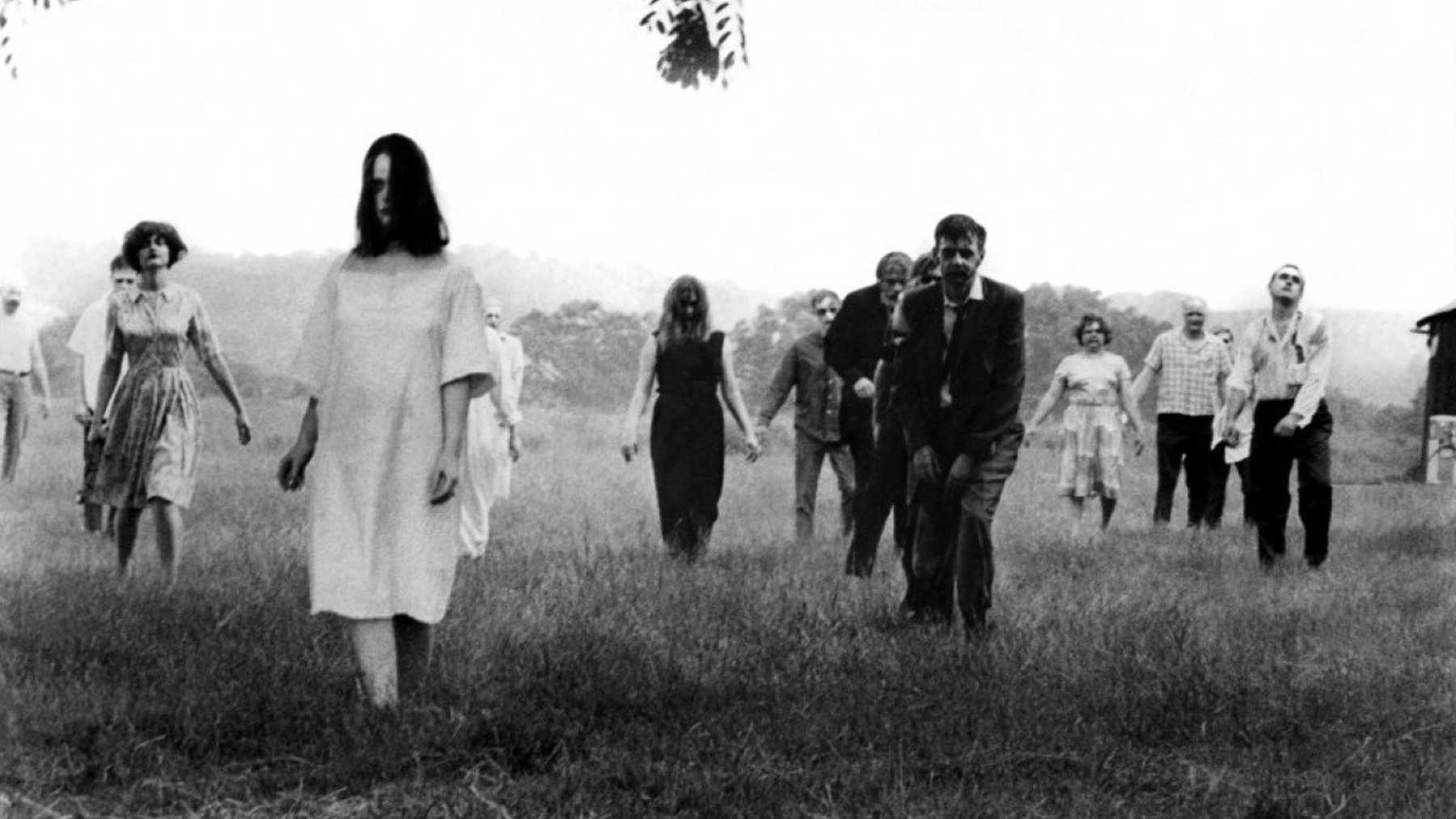
As you watch It Follows, you may notice both subtle and unsubtle allusions to some of the more monumentally popular films we’ve watched in this course, especially the slashers from the 80s. The relentless slowness of the entity walking—always simply walking—yet still always finding its prey resembles Michael Myers in Halloween, as well as the zombies from Night of the Living Dead. The image of the entity arising after being shot multiple times, even in the head, also reminds one of Michael Myers. The absent alcoholic mother feels like a direct reference to the mother in Nightmare on Elm Street, and the scene in which Jay tries to warn Greg that he’s in danger from the bedroom window across the street feels like an allusion to the scene in which Nancy tries to warn Glen that he’s fallen asleep.
You may also notice that some other thematics implicitly present in films we’ve watched, especially the 80s slashers, are more explicitly explored in It Follows. The film considers suburban problematics more aggressively by continuously juxtaposing the clean suburban street with the urban decay of Detroit. Yara and Jay’s exchange on their walk to the pool ensures we understand this is deliberate commentary:
YARA
When I was a little girl my parents told me I wasn’t allowed to go south of 8 mile. I didn’t even understand what that meant. It wasn’t until I got a little older that I realized that was where the city started and the suburbs ended. I started thinking how weird and shitty that was. I had to ask permission to go to the state fair with my best friend and her parents just because it was a few blocks past the border.
JAY
My parents said the same thing to me.
However, we also get a glimpse of Jeff’s affluent home–that is, after he’s done “playing poor” as Hugh to keep Jay from coming inside his “house”–as well as the fancier neighborhood in the opening scene, and these images juxtaposed against Jay’s neighborhood reveal significant wealth gaps. So, while It Follows further critiques those issues of class politics (and thus late capitalism) explored in those early slashers, 40 years later the class divide has widened; the poorer areas are poorer, but the previously middle-class areas have also begun to deteriorate. Even the ambiguously 80s aesthetic itself feels referential in a way that is nostalgic and also critical of that nostalgia. Jay’s family may live in the “safer” suburbs, for example, but there are signs of economic decay inside her home; they may have a television in every room, for example, but none is updated from the 80s, and clearly they don’t have cable. There isn’t a laptop in sight; the only sign of updated technology is Yara’s stylish e-reader. Jay’s family isn’t impoverished, but it’s clear they’re struggling in the lower middle class. Here is a good commentary from Slate on this thematic thread.
Similarly, It Follows plays with slasher formulae (and its gender implications) in interesting ways. Like many of the teenage girls in slashers, Jay is cursed because she has sex, but rather than becoming a “red shirt” side-character for the virgin Final Girl’s journey, she remains our protagonist, and she ends her journey holding hands with a caring partner instead of alone. Furthermore, the film’s treatment of gender and gendered violence is both more overt and more complex. Much of the criticism on slashers argues that the knife (or chainsaw, etc.) is a phallic symbol, and that the stabbing of victims is “metaphorically” rape, while here we have a monster that (it appears) literally rapes its victims to kill them. Both men and women in the film are victims of sexual assault, and the entity assumes the form of different genders at different times; in this sense, the monster does not “read” as male or female. Jay tells Paul she chose Greg instead of him to take the curse because of his more overt masculinity and confidence, yet he’s the only character to die, and his overconfidence is (partly) the reason. But it’s also perhaps a signal that his masculine assertiveness couldn’t protect him.
The politics of consent are also complicated in this film (in a way that I personally consider thought-provoking). Jay and Jeff both seem to see the sex they’ve had as consensual, but is it really, given the lack of disclosure? Is this act not unlike removing a condom secretly, for example, which indeed is sexual assault? The woman at the bar tricked Jeff, and Jeff tricks Jay, and he expects Jay to simply trick someone else, which will be “easy” for her because she’s a girl. Jay tells the police officer the sex was consensual, but she feels violated because she was violated, and she refuses to continue that perpetuation of sexual violence by gaining consent from her partners. She also obviously doesn’t want to have sex with Greg, but feels she has no other choice; she turns her head away and dissociates. This scene visually reads as sexual assault, even though Jay has technically instigated the sex. It Follows is a horror film about the horrors of sexual trauma; the sexual trauma is not metaphorical. But the trauma comes from violence that’s not easily categorized as “rape,” especially not legally speaking, and thus the post-traumatic effects are extra-confusing and disorienting, and also may go un-validated and unaddressed. This is the “real horror” hiding in the fictional horror.
Consider other connections you might make to films we’ve watched in this course. For example, the film ends with a pool scene, much like Let the Right One In and Let Me In. Given that It Follows released in 2012, and given the very different narrative context, it would be a stretch to assume that the pool scene is an allusion to LTROI. However, it still night be worth putting those scenes in conversation with one another.

